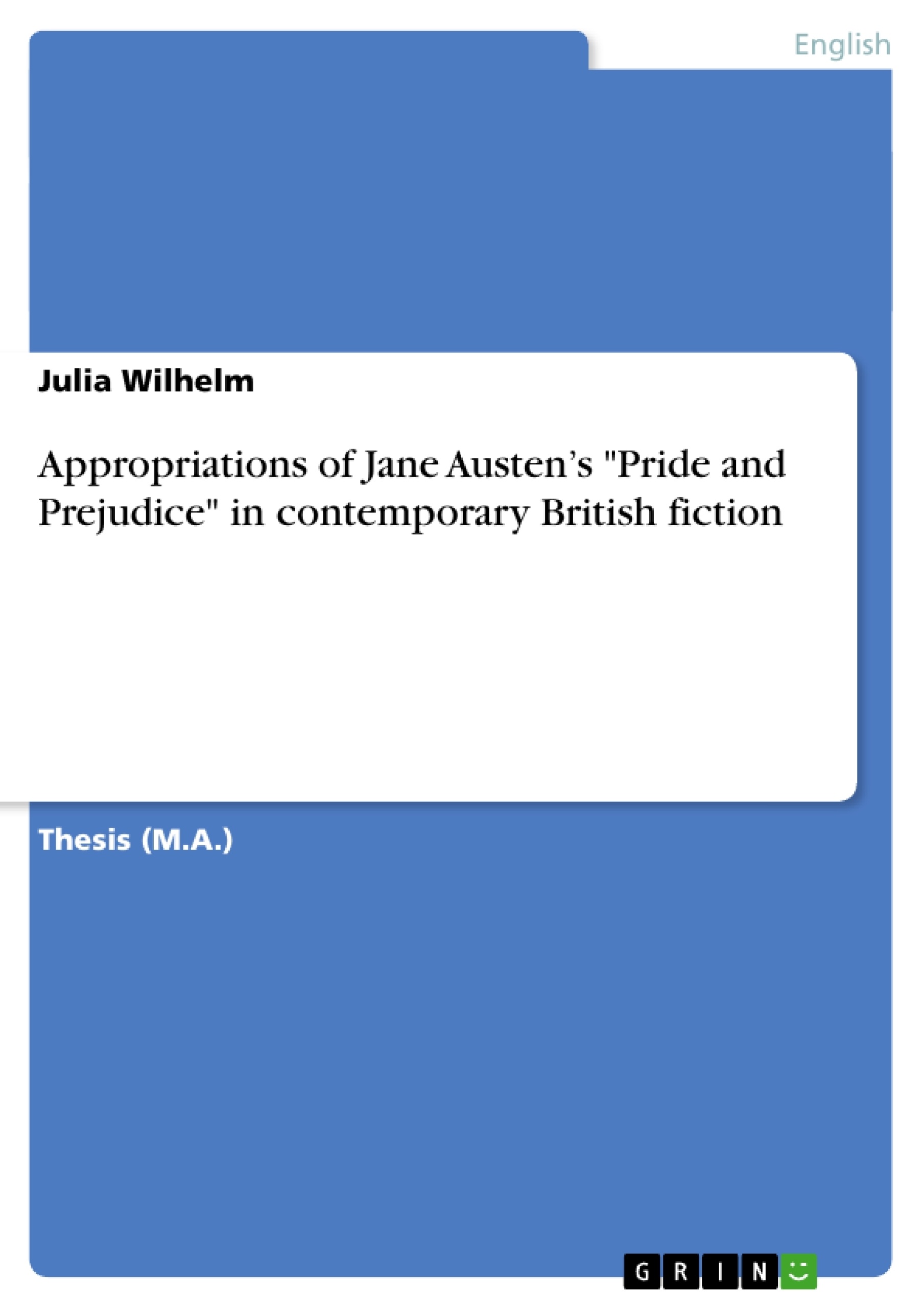World literature is full of great love stories, but there are only few that make it through the centuries and are as well-known and loved today as they were decades ago. One of those writers, who have the ability to leave an everlasting impression, is Jane Austen, who “wrote of a time, but also beyond it; her voice continues to enchant and enthral” (Crusie 1). Her novels are undeniably among the most examined works of English literature.
Over the years, scholars, laity as well as professionals, have approached Austen’s writing from various perspectives and hence innumerable papers, dissertations, articles and books have been written about the author and her work in general and especially about her novel Pride and Prejudice. Since its publication in 1813, it has called forth heavy criticism as well as effusive praise and it is remarkable that, although the literary world has changed noticeably in the course of nearly two hundred years, her novel is still admired and considered to be of significance today.
From Austen’s contemporary writing and its scarce possibilities for female novelists on to the emancipation of the female author and the increased literary output of postmodern writers at the end of the Twentieth Century and to the possibilities for women novelists in the recently developing genre labelled chick lit – Pride and Prejudice still continues to fascinate readers and thereby encourages other writers. Especially the developing relationship of the two protagonists Elizabeth Bennet and Mr Fitzwilliam Darcy captivates readers all around the world and proves that their story is as appealing in the present as it was in the past.
The appeal of Austen’s best-known and probably most famous novel to literary posteriority lies in the astonishing emotional impact of a seemingly simple story: A young girl and a young man, destined for one another, loathe each other from the very beginning because of wrong first impression and bad influence from others. They gradually have to overcome these obstacles in order to recognise the nobility of each other’s characters and find happiness together. This paper sets out to examine how this formula was put to use to yield three contemporary works of British fiction; Kate Fenton’s Lions and Liquorice, Helen Fielding’s Bridget Jones’s Diary and Melissa Nathan’s Pride, Prejudice and Jasmin Field and what transformations it has experienced in the process.
Inhaltsverzeichnis (Table of Contents)
- 1. Introduction
- 1.1 Preliminary Remarks and Elementary Presumptions
- 1.2 Pride and Prejudice in the Nineteenth and Twentieth Century
- 2. Literary Status Quo
- 3. Structure, Style and Narrative Technique
- 4. Selected Characters and Their Relationships
- 4.1 Love and Respect
- 4.2 Decency and Tediousness
- 4.3 Convenience and Obligation
- 4.4 Resignation and Indifference
- 4.5 Imprudence and Mischief
- 5. Under Pressure: The Significance of Status
- 6. Conclusion
Zielsetzung und Themenschwerpunkte (Objectives and Key Themes)
This paper aims to analyze three contemporary British fiction works that appropriate elements of Jane Austen’s Pride and Prejudice. The analysis focuses on the transformation of the original novel’s themes and characters in these adaptations and their reception within the context of contemporary literature.
- The adaptation of classic literary themes in contemporary British fiction.
- The role of gender and societal norms in shaping the protagonists’ relationships.
- The influence of Jane Austen’s literary legacy on modern writers.
- The interplay of status, social class, and individual ambition in the narratives.
- The use of humor and satire to critique social conventions.
Zusammenfassung der Kapitel (Chapter Summaries)
The first chapter introduces the concept of "discursivity" and how Jane Austen's work has inspired a wide range of literary adaptations. It also sets the stage for the analysis by outlining the core themes and narrative structure of Pride and Prejudice, as well as the key characteristics of the three contemporary novels chosen for examination.
The second chapter focuses on the literary status quo, exploring the reception of Austen's work in the nineteenth and twentieth centuries and the context for contemporary adaptations.
The third chapter examines the structural, stylistic, and narrative techniques employed by Austen and the three contemporary authors. It explores how they use literary devices to create specific effects and engage the reader.
The fourth chapter provides a detailed analysis of key characters and their relationships, focusing on how Austen's original characters and their relationships are transformed in the contemporary adaptations.
The fifth chapter delves into the significance of status and social class in the narratives, exploring how these concepts contribute to the characters' decisions and the unfolding of the plot.
Schlüsselwörter (Keywords)
The main keywords and focus topics include Jane Austen, Pride and Prejudice, contemporary British fiction, adaptation, gender, social norms, literary legacy, status, social class, humor, satire, and the contemporary adaptations of Pride and Prejudice: Lions and Liquorice, Bridget Jones's Diary, and Pride, Prejudice and Jasmin Field.
- Quote paper
- M.A. Julia Wilhelm (Author), 2006, Appropriations of Jane Austen’s "Pride and Prejudice" in contemporary British fiction, Munich, GRIN Verlag, https://www.grin.com/document/89126



